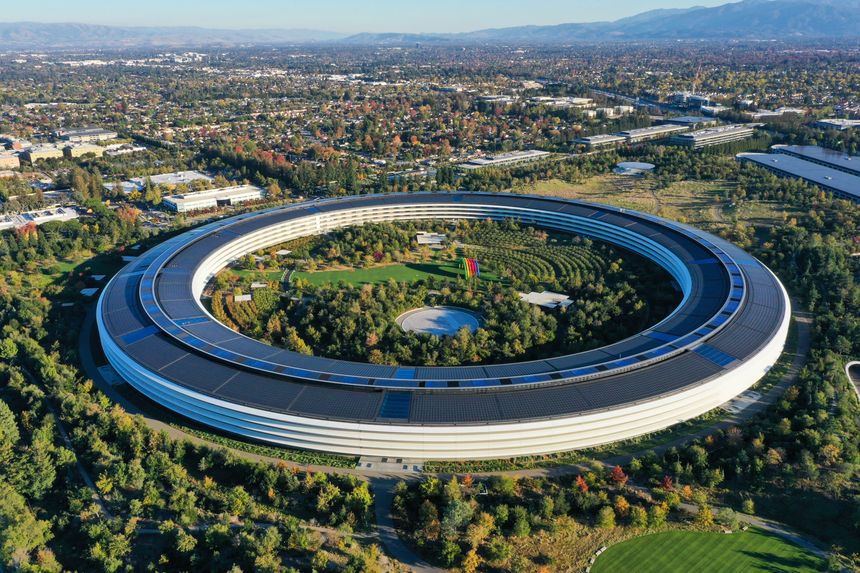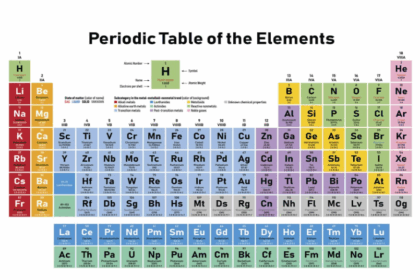
Apple headquarters in Cupertino, Calif. The company’s stock now trades at a 42% premium to the S&P 500 on a price/earnings basis.
Photo: Tayfun Coskun/Anadolu Agency/Getty Images
Apple Inc. AAPL 2.50% is worth $1 trillion more than it was nine months ago, yet the tech giant’s prospects haven’t changed that much in that time.
The company behind the iPhone, AirPods and “Ted Lasso” also became the first to hit a market value of $3 trillion on Monday. And while it remains an exclusive group, Apple isn’t alone in the 13-digit club: Microsoft, Google parent Alphabet Inc., Amazon.com, Tesla and Saudi Aramco all trade above that level, with Facebook parent Meta Platforms on the cusp of joining them.
That alone says a lot about the dynamics driving Apple’s shares as well as many of its other big tech peers these days. In a market of meme stocks, NFTs and electric-vehicle makers worth more than $80 billion before shipping their first car, trillion-dollar values for companies whose goods and services now sit at the center of modern life—while reliably generating billions in operating earnings—don’t seem so remarkable. Investors have taken on more risk overall; the S&P 500 and Nasdaq Composite are now trading 17% and 23%, respectively, above their respective five-year average multiples of forward earnings.
But Apple’s sharp rise can’t be fully attributed to market froth. At its current multiple of more than 31 times forward earnings, Apple is now at a 42% premium to the S&P 500 compared with its five-year average premium of only 4%. Investors banking on the company developing the next big thing cheer rumors of future products like augmented-reality glasses and even an electric car. The latter especially seems a long way off, though, if it arrives at all. Much of Apple’s elevated research-and-development spending over the past several years has gone to more internal efforts such as developing proprietary chips for its devices. Such efforts can certainly lead to more appealing products—Apple’s newest Macs powered with its own chips have been a bona fide hit—but they won’t radically alter the company’s fortunes.
Meanwhile, Apple faces the near-term challenge inherent in a cyclical business for which product cycles are getting longer. The fiscal year ended last September was Apple’s biggest ever, with revenue jumping 33% to a record $365.8 billion and operating income surging 64% to $108.9 billion. That was impressive for such a massive enterprise, but it was the company’s first double-digit growth in three years. And while Apple’s products and services logged strong sales across the board, the iPhone still makes up more than half of its revenue. Furthermore, sales of its latest smartphone were helped tremendously by generous price subsidies from wireless carriers anxious to get more 5G devices into customers’ hands.
Those dynamics won’t continue. Analysts expect iPhone unit sales to rise by only 1% this fiscal year compared with 24% last year, according to consensus estimates by Visible Alpha. And analysts polled by FactSet expect Apple’s sales to grow by an average of only 5% annually over the next three years. That is the lowest projected pace among the five big U.S. tech giants; Amazon, which now generates 25% more revenue than Apple while being valued about $1.3 trillion less, is projected to average 16% annual growth over the next three years.
Unfortunately, $3 trillion just doesn’t buy what it used to.
Copyright ©2022 Dow Jones & Company, Inc. All Rights Reserved. 87990cbe856818d5eddac44c7b1cdeb8
Appeared in the January 4, 2022, print edition.








